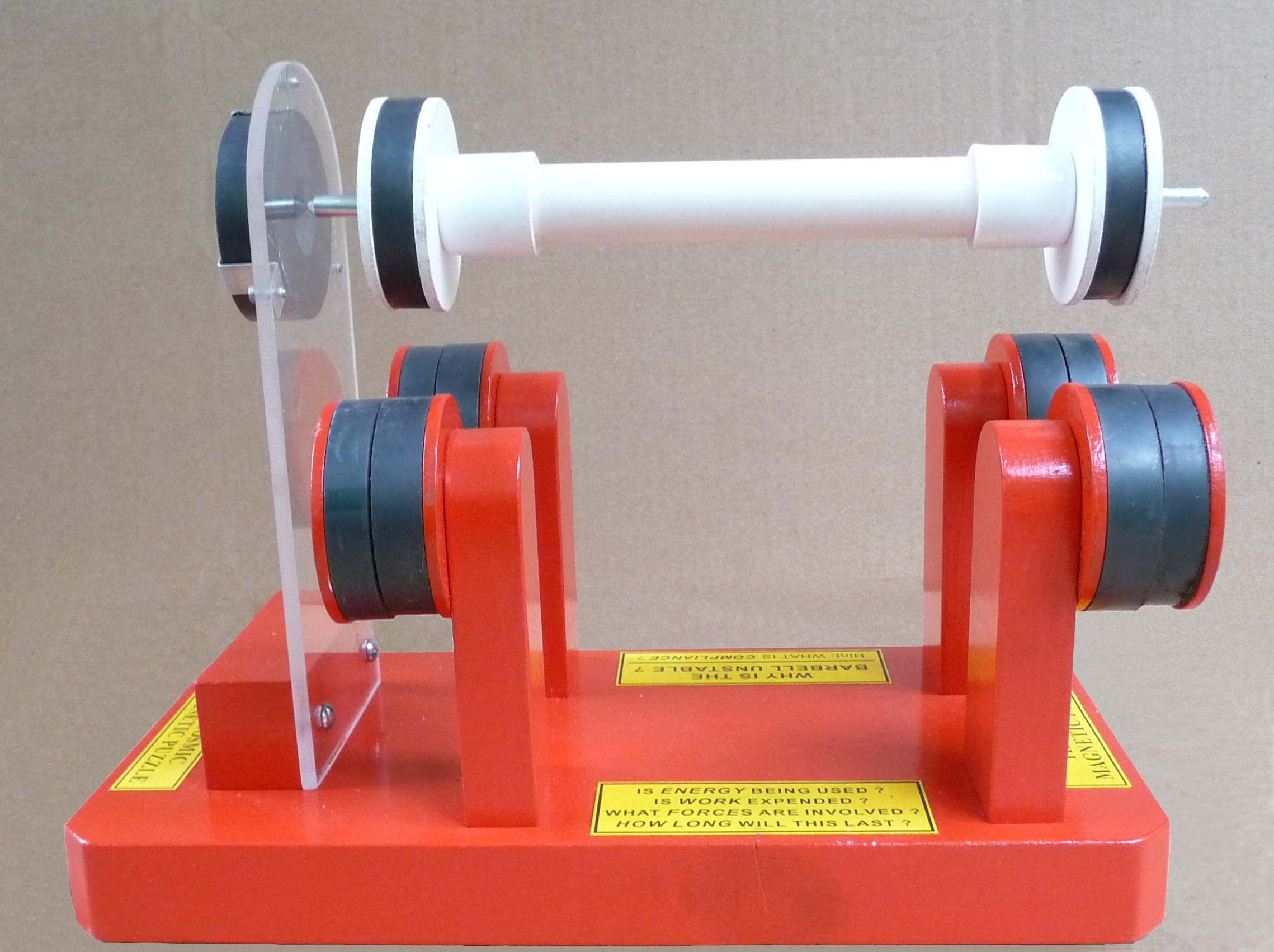April 4, 2017
 No matter what grade you teach, at some point you will surely need to introduce your students to the three Laws of Motion developed by Sir Isaac Newton in 1687. His Philosophiae Naturalis Principia Mathematica took Newton two years to write and was the culmination of more than 20 years of thinking.
No matter what grade you teach, at some point you will surely need to introduce your students to the three Laws of Motion developed by Sir Isaac Newton in 1687. His Philosophiae Naturalis Principia Mathematica took Newton two years to write and was the culmination of more than 20 years of thinking.
That was more than 300 years ago. Today, we live in the YouTube era. Videos allow us to quickly summarize important scientific concepts like forces and motion in dramatic ways that your students will understand and remember. We’ve gathered some excellent examples here. Enjoy!
If you find a video on forces and motion that you’d like to share with us, please leave a comment!
Read the rest of this entry »
 Leave a Comment » |
Leave a Comment » |  College level, Elementary level, energy, High School level, Middle School level, Physics | Tagged: Educational Innovations, energy, force, force and motion, homeschool, kinetic energy, newton, Newton's First Law, Newton's Second Law, Newton's Third Law, parent friendly, PBL, PhBL, PhenoBL, phenomenon based learning, Physics, science, STEM |
College level, Elementary level, energy, High School level, Middle School level, Physics | Tagged: Educational Innovations, energy, force, force and motion, homeschool, kinetic energy, newton, Newton's First Law, Newton's Second Law, Newton's Third Law, parent friendly, PBL, PhBL, PhenoBL, phenomenon based learning, Physics, science, STEM |  Permalink
Permalink
 Posted by Donna Giachetti
Posted by Donna Giachetti
April 4, 2017
 You can’t talk about forces and motion without talking about Isaac Newton. His three Laws of Motion were published more than 300 years ago, and yet their basic concepts—inertia, acceleration, momentum, and mass—are still the standard for how we discuss forces and motion today. The laws may have been refined over the years (most famously by Einstein) but they still reign as incontrovertible scientific laws. We couldn’t send the Hubble Space Telescope into orbit without Newton.
You can’t talk about forces and motion without talking about Isaac Newton. His three Laws of Motion were published more than 300 years ago, and yet their basic concepts—inertia, acceleration, momentum, and mass—are still the standard for how we discuss forces and motion today. The laws may have been refined over the years (most famously by Einstein) but they still reign as incontrovertible scientific laws. We couldn’t send the Hubble Space Telescope into orbit without Newton.
While there may not be much NEW about Newton’s Laws, there is still plenty to say about how they affect the world around us. Read on for some interesting news reports related to forces and motion. Let us know if you find an article you’d like us to post!
Read the rest of this entry »
 Leave a Comment » |
Leave a Comment » |  College level, Elementary level, energy, High School level, Middle School level, Physics | Tagged: Educational Innovations, energy, force, force and motion, homeschool, kinetic energy, newton, Newton's First Law, Newton's Second Law, Newton's Third Law, parent friendly, PBL, PhBL, PhenoBL, phenomenon based learning, Physics, science, STEM |
College level, Elementary level, energy, High School level, Middle School level, Physics | Tagged: Educational Innovations, energy, force, force and motion, homeschool, kinetic energy, newton, Newton's First Law, Newton's Second Law, Newton's Third Law, parent friendly, PBL, PhBL, PhenoBL, phenomenon based learning, Physics, science, STEM |  Permalink
Permalink
 Posted by Donna Giachetti
Posted by Donna Giachetti
April 4, 2017

Need help explaining the fundamentals of forces and motion to your students? Hands-on science demos to the rescue! We have a dynamic array of energy conversion products as well as an impressive collection of simple machines to demonstrate pushes and pulls… just to name a few of our many energy-related materials. Read on to hear what our customers are saying about our some of their favorite EI teaching tools.
If you have a favorite Educational Innovations product, we invite you to send us a comment below. We’d love to share your review with your fellow teachers and science lovers.
Read the rest of this entry »
 Leave a Comment » |
Leave a Comment » |  College level, Elementary level, energy, experiments, High School level, Middle School level, Physics | Tagged: discrepant event, Educational Innovations, energy, experiments, fun experiments, hands-on activity, homeschool, kinetic energy, newton, Newton's First Law, Newton's Second Law, Newton's Third Law, parent friendly, Physics, physics demonstration apparatus, science, STEM |
College level, Elementary level, energy, experiments, High School level, Middle School level, Physics | Tagged: discrepant event, Educational Innovations, energy, experiments, fun experiments, hands-on activity, homeschool, kinetic energy, newton, Newton's First Law, Newton's Second Law, Newton's Third Law, parent friendly, Physics, physics demonstration apparatus, science, STEM |  Permalink
Permalink
 Posted by Donna Giachetti
Posted by Donna Giachetti
March 25, 2010
 by: Martin Sagendorf
by: Martin Sagendorf
We often think we see forces. However, in reality, we only see the results of forces. To understand forces we must believe in Newton’s Third Law. It states that all forces can only exist in opposite pairs and be equal in magnitude. And… what is very interesting is that Newton’s Third Law does not stipulate that the forces be of the same kind.
Also, by Newton’s Second Law: If the (net) forces are equal, there will be no accelerations (Fnet = ma = 0)… in other words… equal and opposite (net) forces create a state of equilibrium. An interesting example of equal and opposite (and unlike-type) forces is that exhibited by a combination of opposed magnetic fields within a gravitational (force) field. These two different (types) of fields interact purely as ‘force fields’ – only their forces matter… not their types.
The Cosmic Magnetic Puzzle exemplifies a combination of such forces: a barbell containing two ‘donut’ magnets supported in mid-air above stationary pairs of magnets – with an additional pair of donut magnets maintaining the horizontal location of the barbell.

Read the rest of this entry »
 Leave a Comment » |
Leave a Comment » |  College level, experiments, High School level, magnetism, Middle School level, Physics | Tagged: balanced forces, cosmic magnetic puzzle, force and motion, magnets, Newton's First Law, Newton's Second Law |
College level, experiments, High School level, magnetism, Middle School level, Physics | Tagged: balanced forces, cosmic magnetic puzzle, force and motion, magnets, Newton's First Law, Newton's Second Law |  Permalink
Permalink
 Posted by Tami O'Connor
Posted by Tami O'Connor
 No matter what grade you teach, at some point you will surely need to introduce your students to the three Laws of Motion developed by Sir Isaac Newton in 1687. His Philosophiae Naturalis Principia Mathematica took Newton two years to write and was the culmination of more than 20 years of thinking.
No matter what grade you teach, at some point you will surely need to introduce your students to the three Laws of Motion developed by Sir Isaac Newton in 1687. His Philosophiae Naturalis Principia Mathematica took Newton two years to write and was the culmination of more than 20 years of thinking. 


 Posted by Donna Giachetti
Posted by Donna Giachetti  You can’t talk about forces and motion without talking about Isaac Newton. His three Laws of Motion were published more than 300 years ago, and yet their basic concepts—inertia, acceleration, momentum, and mass—are still the standard for how we discuss forces and motion today. The laws may have been refined over the years (most famously by Einstein) but they still reign as incontrovertible scientific laws. We couldn’t send the Hubble Space Telescope into orbit without Newton.
You can’t talk about forces and motion without talking about Isaac Newton. His three Laws of Motion were published more than 300 years ago, and yet their basic concepts—inertia, acceleration, momentum, and mass—are still the standard for how we discuss forces and motion today. The laws may have been refined over the years (most famously by Einstein) but they still reign as incontrovertible scientific laws. We couldn’t send the Hubble Space Telescope into orbit without Newton.
 by: Martin Sagendorf
by: Martin Sagendorf